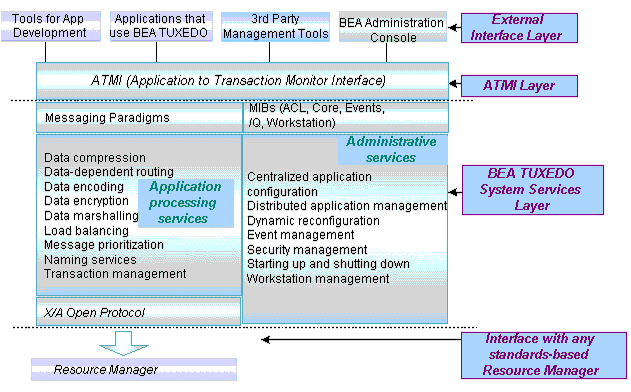


|

|
|
|
|
Basic Architecture of the BEA Tuxedo System
The following figure illustrates the basic architectural elements of a BEA Tuxedo system: external interfaces to the system, the ATMI layer, the MIB, BEA Tuxedo system services, and the system's interface with standards-compliant resource managers.
The BEA Tuxedo System Basic Architecture

As shown in this illustration, the BEA Tuxedo system contains the following parts.

|

|

|
|
|
|
Copyright © 2000 BEA Systems, Inc. All rights reserved.
|